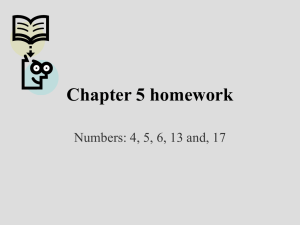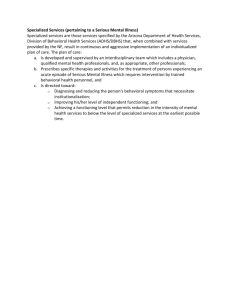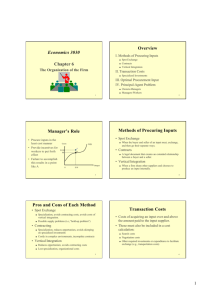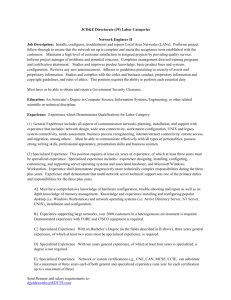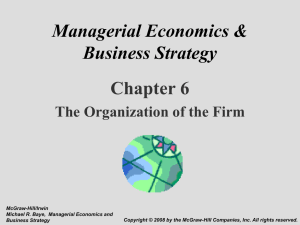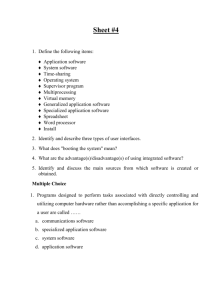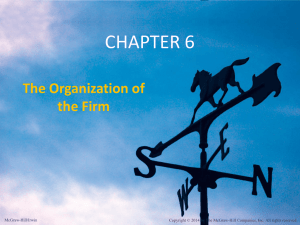08/30 - David Youngberg
advertisement
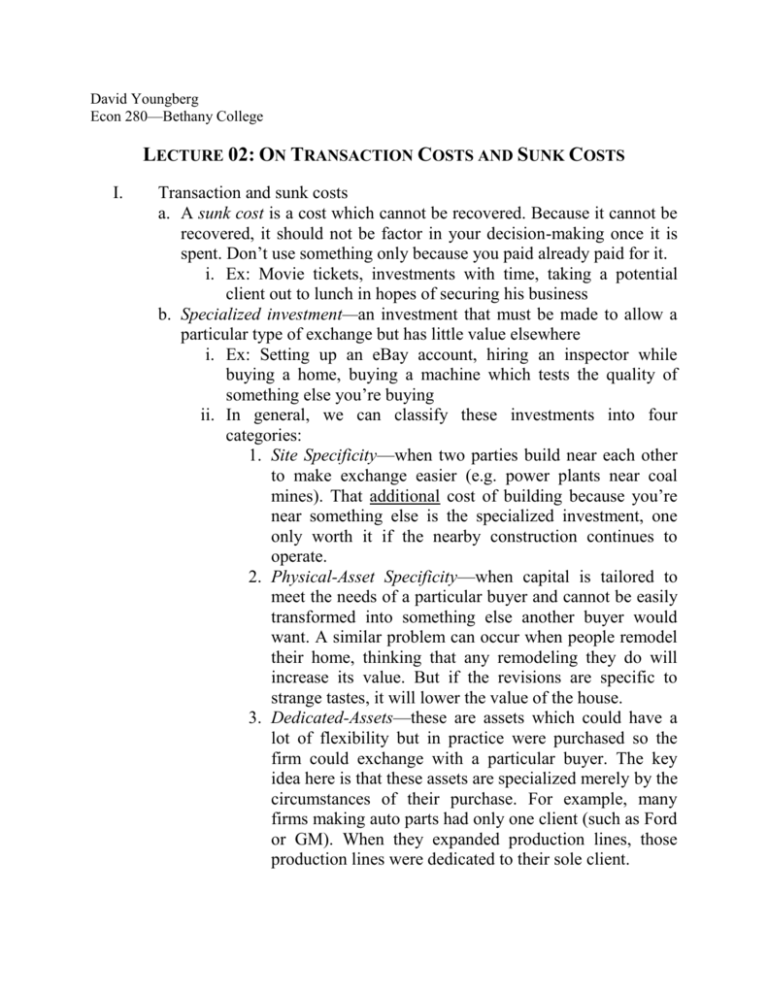
David Youngberg Econ 280—Bethany College LECTURE 02: ON TRANSACTION COSTS AND SUNK COSTS I. Transaction and sunk costs a. A sunk cost is a cost which cannot be recovered. Because it cannot be recovered, it should not be factor in your decision-making once it is spent. Don’t use something only because you paid already paid for it. i. Ex: Movie tickets, investments with time, taking a potential client out to lunch in hopes of securing his business b. Specialized investment—an investment that must be made to allow a particular type of exchange but has little value elsewhere i. Ex: Setting up an eBay account, hiring an inspector while buying a home, buying a machine which tests the quality of something else you’re buying ii. In general, we can classify these investments into four categories: 1. Site Specificity—when two parties build near each other to make exchange easier (e.g. power plants near coal mines). That additional cost of building because you’re near something else is the specialized investment, one only worth it if the nearby construction continues to operate. 2. Physical-Asset Specificity—when capital is tailored to meet the needs of a particular buyer and cannot be easily transformed into something else another buyer would want. A similar problem can occur when people remodel their home, thinking that any remodeling they do will increase its value. But if the revisions are specific to strange tastes, it will lower the value of the house. 3. Dedicated-Assets—these are assets which could have a lot of flexibility but in practice were purchased so the firm could exchange with a particular buyer. The key idea here is that these assets are specialized merely by the circumstances of their purchase. For example, many firms making auto parts had only one client (such as Ford or GM). When they expanded production lines, those production lines were dedicated to their sole client. II. 4. Human Capital—this describes the skills and knowledge people have which makes them more productive. Since firms have many specialized jobs (recall Adam Smith), training employees—or compensating them more because they are trained—is a type of specialized investment. c. Specialized investments increase transaction costs through: i. Underinvestment. Because specialized investment locks a person or firm into a particular plan of action, there is a tendency to not invest as much as one should. This is because such investments are particularly risky and if you’re going to be stuck with something you don’t want, you don’t want to have lost a lot of money on the deal. Thus you end up with a suboptimal level of investment. ii. Opportunism. When a firm or person locks itself into an investment, others may take advantage of them by increasing price or decreasing quality. A firm could construct a factory based on a nearby supplier’s location (allowing them to save on shipping). The supplier could then increase its price when selling to that firm. At the same time, a specialized investment often means no one else is investing so, if the firm which didn’t invest needs to buy or sell, the other firm can engage in opportunism as well. Note how theories of monopoly and monopsony play out here. iii. Costly bargaining.1 If there are specialized investments, then that’s could indicate that the market is relatively new. Thus there is no prevailing market price. The sides must negotiate a price, a process which requires research and professional negotiators. It also encourages each side to try to increase its bargaining position: hiring lawyers, withholding delivery, etc. The Coase Theorem. a. Ronald Coase offered his on how to deal with externalities— specifically negative externalities—in 1960. b. Suppose there are two neighbors and one (A) of them is externalizing costs onto the other (B) through some activity. c. Suppose A values the externalizing activity at $30 and B would pay $50 to avoid the externalized costs. Technically, specialized investments are a symptom that costly bargaining will happen. It doesn’t cause it. However, your book included it in its discussion so I repeat it here. 1 d. In Coase’s world, the two could go to a judge who would assign whom has the right to what—does A have a right to do what he wants in his own place or does B have a right to not be disturbed? e. The judge can conclude in two ways: i. If A has the right, then B would be willing to pay A something between $30 and $50 to make him stop. ii. If B has the right, then A would not be willing to pay B to allow the noise to continue so it remains quiet. f. The Coase Theorem dictates that no matter who is assigned the right, society experiences the same result—in both cases, the noise ceases. i. This is often used in law and forms the basis of law and economics. g. The weak point with the Theorem is that it assumes no transaction costs. If A is a polluting factory and B is a community of people, how does one negotiate between them all? Suddenly, it really does matter who is assigned the right to what because it will determine which party bears the transaction costs, and that can change the outcome. i. In his paper, Coase realized this weakness and offered a solution. The person who changes their behavior should be the one who’s the “least cost avoider.” What’s cheaper: for A to stop polluting or for B to deal the pollution (or just move)?

